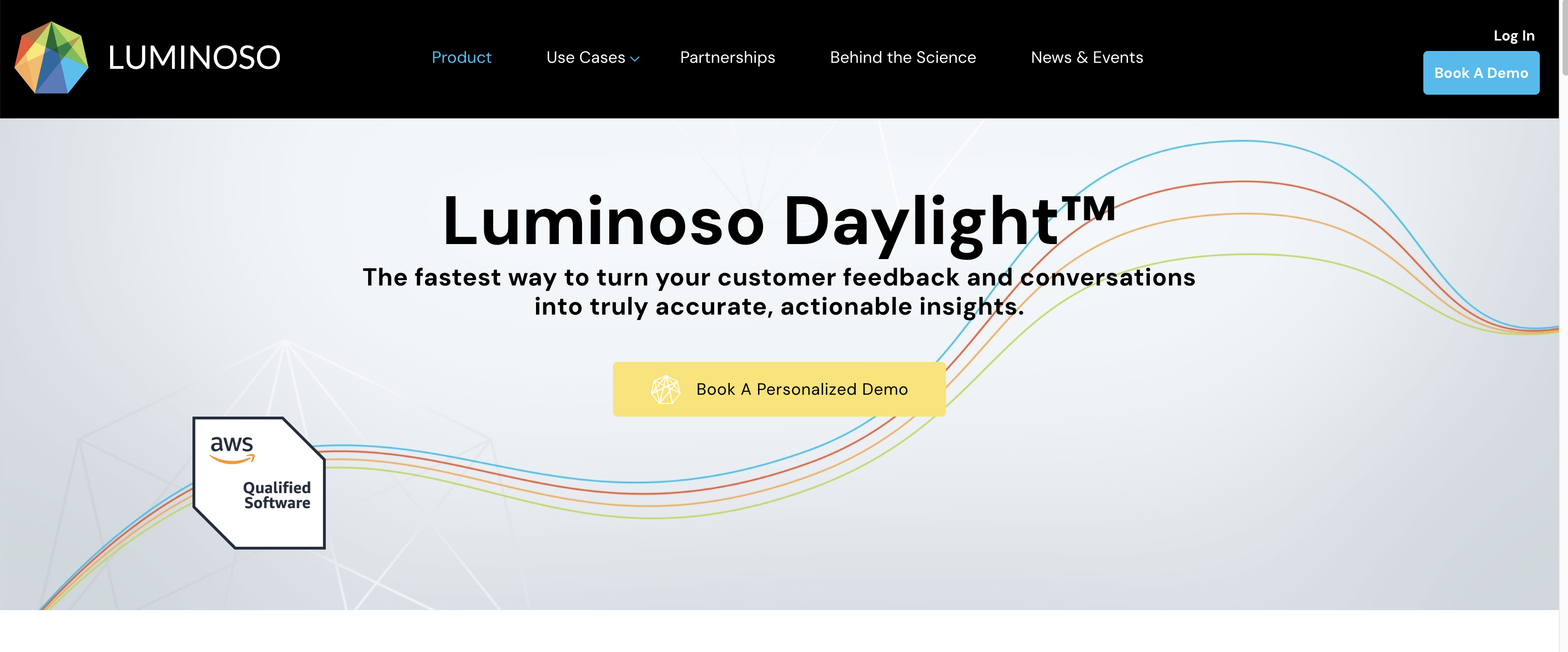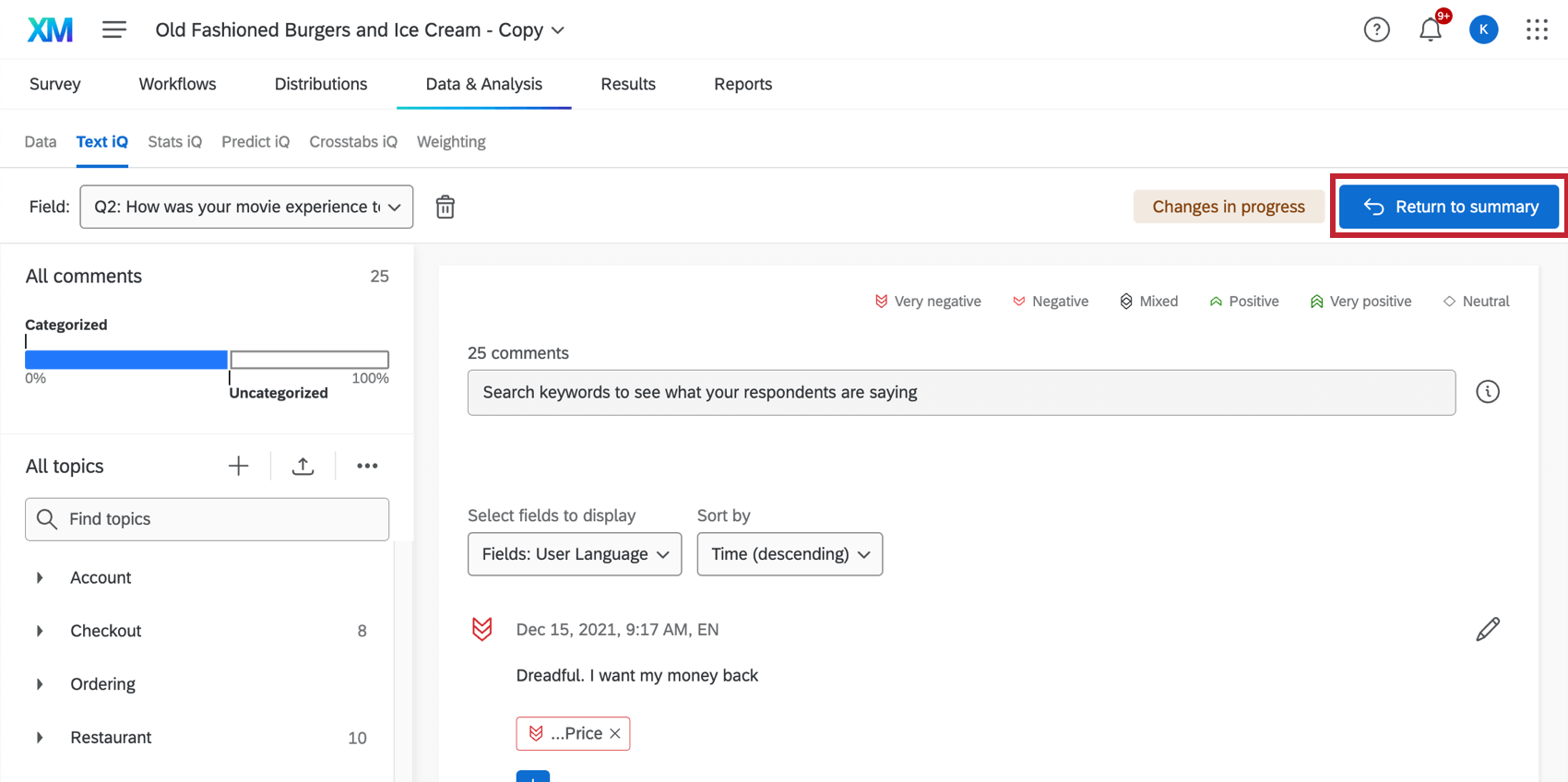The field of text analysis has seen unprecedented advancements in recent years, driven by the rapid progress in generative AI. Models like GPT-4 and beyond, combined with cutting-edge natural language processing (NLP) techniques, have transformed how businesses analyze and extract insights from unstructured data. These technologies have enabled platforms to summarize, translate, and categorize massive volumes of text with remarkable speed and accuracy. In 2024, we’re seeing a new era of AI-powered tools that go beyond traditional methods, offering advanced capabilities such as theme extraction, sentiment analysis, and multilingual support.
While established platforms have adapted to these changes, newer AI-native solutions have emerged to fully leverage the latest advancements. These tools prioritize both quality and usability, offering a perfect balance between AI automation and human expertise. This blog compares some of the top text analysis platforms available today, highlighting their features, strengths, and limitations, to help you make an informed decision.
1. BTI (Boston Tech Insights)

BTI is an AI-native platform built exclusively for text analysis with a strong focus on analyzing interviews and open-ended survey responses/verbatim. Known for its premium quality, the BTI platform delivers unmatched accuracy, making it a standout choice for companies that have high standards for analysis quality, such as consulting, market research and public opinion firms.
Key Features:
- Theme Extraction: Summarizes thousands of open-ended responses in seconds
- Entity Coding: Extracts a comprehensive list of entities, such as city names, brand names, and policies
- Multilingual Support: Translates non-English responses and text into English seamlessly
- Balance Between AI Automation and Human Expertise: Allows users to split, combine, group, and edit themes
- Great Integrations: Integrates seamlessly with analytical tools like SPSS and Q.
Pros:
- Great for market research, consulting and public polling
- Impressive Analysis Quality: No AI hallucinations
- Multilingual Support: Analyze text in a mix of different languages
- Balanced Approach: Combines AI automation with human editing for precision and control
- User-Friendly Interface: Intuitive design makes it easy to use
- Affordable Pricing: Offers premium features at competitive rates
Cons:
- Relatively New: As an AI-native platform, it’s newer to the market compared to larger, more established incumbents.
2. Kapiche

Kapiche is a feedback analytics platform that analyzes customer feedback, allowing you to provide deep insights quickly and help your company make better decisions. The platform lets you analyze all your customer feedback in one place, regardless of whether the data is from surveys, support conversations, product reviews or your CRM.
Key Features:
- Sentiment analysis with deep context
- Topic modeling for recurring themes
- Interactive dashboards for visual insights.
Pros:
- Work with text from multiple sources
- Highly customizable dashboards
Cons:
- Feature-rich making the platform complex to navigate
- Limited support for non-customer feedback use cases
3. Ascribe
Ascribe is a traditional text analysis tool that has been used for years, particularly in market research. It offers a variety of traditional text analysis methods for coding and categorizing responses. Ascribe has started adding some AI features in recent years but the new AI features do not integrate well with their existing features and methods.

Key Features:
- Manual and automated text coding
- Sentiment analysis and text categorization
- Integration with survey platforms for seamless data import
Pros:
- Solid track record in market research
- Good for those familiar with traditional coding methods
- Supports multilingual text analysis
Cons:
- User interface is not intuitive, making it complicated for new users
- Relies heavily on traditional text analysis methods, which can be less efficient compared to modern AI-based tools
- Platform is more clunky compared with newer AI platforms
4. Brandwatch
Brandwatch specializes in social listening and sentiment analysis, helping businesses track brand reputation and monitor trends in real-time.

Key Features:
- Social media sentiment tracking
- Competitive benchmarking
- Trend analysis across platforms
Pros:
- Best suited for real-time social media analytics
- Advanced influencer tracking
- Rich visualizations and reports
Cons:
- Limited applications outside social media monitoring
- High learning curve for beginners
5. Relative Insight
Relative Insight is a platform designed to uncover insights by comparing text datasets. Originally developed as a tool for law enforcement, it has evolved into a robust text analysis solution for businesses and researchers. Relative Insight excels at comparative analysis, making it ideal for identifying differences and similarities across datasets, such as customer feedback, brand messaging, or demographic-specific language.

Key Features:
- Comparative Text Analysis: The platform specializes in comparing two or more text datasets to identify unique linguistic patterns and trends
- Dashboard Visualizations: Offers detailed visualizations that make comparisons easy to understand and actionable
- Language Agnostic: Supports multiple languages, allowing users to analyze text data across global markets
Pros:
- Unique Focus on Comparison: Excellent for identifying key differences and trends between datasets, making it highly specialized
- User-Friendly Interface: Provides an intuitive experience for conducting and visualizing text comparisons
- Good Multilingual Support: Can process and analyze text data in several languages
- Adaptable for Various Use Cases: Useful across industries like marketing, HR, and customer insights.
Cons:
- Limited Beyond Comparison: While powerful for comparative analysis, it lacks advanced features like entity extraction or sophisticated sentiment analysis
- Traditional Text Analysis Elements: Relies on many conventional methods, which might not fully leverage the latest generative AI advancements
- Customization Can Be Complex: Custom taxonomies and setup processes can be challenging for new users without prior experience
6. Lexalytics
Lexalytics delivers industry-specific insights using NLP, with applications in sectors like healthcare, finance, and hospitality.

Key Features:
- Multi-language sentiment analysis
- Industry-tailored taxonomy
- Intent detection and actionable insights
Pros:
- Robust solutions for niche industries
- Strong multi-language support
- Scalable for large datasets
Cons:
- Requires domain expertise for setup
- Interface can feel outdated
- Rely on traditional NLP methods
7. Keatext
Keatext simplifies feedback analysis with AI-driven insights, making it ideal for businesses focused on customer experience.

Key Features:
- Sentiment trend analysis
- Feedback categorization
- Root cause identification
Pros:
- Quick and actionable insights for CX teams
- Real-time trend detection
- User-friendly for non-technical teams
Cons:
- Limited scalability for non-CX data
- Few customization options
8. Luminoso
Luminoso uses AI-powered NLP to derive insights from diverse sources, from customer feedback to internal documents.

Key Features:
- Real-time analysis and visualization
- Multilingual support
- Concept clustering for theme detection
Pros:
- Fast and accurate analysis
- Handles diverse data sources well
- Excellent for trend and sentiment analysis
Cons:
- Limited industry-specific solutions
- Advanced features can be resource-intensive
- Outdated platform UI and user experience
9. TextIQ
TextIQ, part of the Qualtrics ecosystem, excels in integrating feedback analysis directly into customer experience platforms. It allows you to assign topics to feedback you have received, perform sentiment analysis and report out on your results with dynamic widgets.

Key Features:
- AI-driven text sentiment scoring
- Comprehensive feedback dashboards
- Social media listening integration
Pros:
- Seamlessly integrates with Qualtrics surveys
Cons:
- Limited flexibility outside the Qualtrics ecosystem
- Steeper learning curve for advanced features
- Need to predefine the topics and the overall process is still manual and time-consuming
- Platform UI looks clunky
10. AYLIEN
AYLIEN provides NLP and deep learning capabilities for content classification, sentiment analysis, and topic detection. It utilizes AI-powered news data to drive critical business insights. Its News API is the most efficient, effective, and accurate way to access global news at scale.

Key Features:
- News Aggregation: Access to large amount of articles daily.
- AI Filtering: Advanced search with millions of entities and categories.
- Data Visualization: Real-time insights and historical analysis.
- Integration: Easy export to other applications.
- Multilingual Support: Coverage in 16 languages with auto-translation.
Pros:
- Comprehensive news coverage from a vast number of sources
- Advanced AI-powered search and filtering capabilities
- Multilingual support with auto-translation
- Easy integration with other systems and workflows
- Potential to significantly reduce time spent on news research
Cons:
- Narrow focus compared to competitors; strong focus on news data
- Require technical expertise to fully utilize the API
Conclusion
The text analysis landscape in 2024 reflects a dynamic interplay between traditional tools and emerging innovations. While platforms like Ascribe cater to those familiar with conventional methods, they often require steep learning curves and extensive manual input.
AI-native platforms, such as BTI (Boston Tech Insights), represent a transformative shift. By leveraging the power of generative AI, these platforms excel in delivering fast, accurate, and comprehensive insights while striking the right balance between AI automation and human refinement.
For those looking to embrace cutting-edge technology and streamline their workflows, AI-native platforms are paving the way forward. They provide a glimpse into the future of text analysis, where insights are not only faster and more accessible but also richer in depth and context—unlocking new possibilities for researchers, businesses, and analysts alike.

